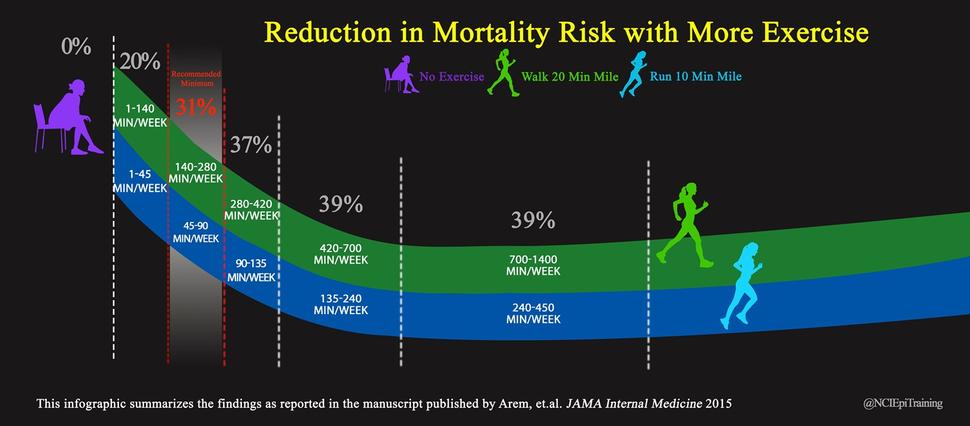DCEG investigators have made significant discoveries on the effect of physical activity on cancer risk:
- Reduced risk of colon, breast, endometrial, and ovarian cancers associated with physical activity (Albanes et al., 1989; Chow et al., 1993; Dosemeci et al., 1993; Sturgeon et al., 1993; Zheng et al., 1993).
- Research studies by DCEG cited in the 1996 Surgeon General’s Report on Physical Activity and Health.
- Leisure-time physical activity is associated with longer life expectancy, even at relatively low levels of activity and regardless of body weight, a finding that reinforces U.S. guidelines for physical activity for all Americans (Moore SC, et al., 2012).
- People who engage in three to five times the recommended minimum level of leisure-time physical activity derive the greatest mortality reduction, when compared with people who do not engage in leisure-time physical activity (Arem H, et al., 2015).
- Leisure-time physical activity was associated with lower risks of 13 cancer types; most of these associations were evident regardless of body mass index or smoking history (Moore et al 2016). These findings confirm and extend the evidence for a benefit of physical activity on cancer risk and support its role as a key component of population-wide cancer prevention and control efforts.
-
Physical activity throughout adulthood, especially increased leisure-time physical activity later in life, was associated with decreased risk of death in a cohort study of over 300,000 people (Saint-Maurice PF, et al., 2019).
